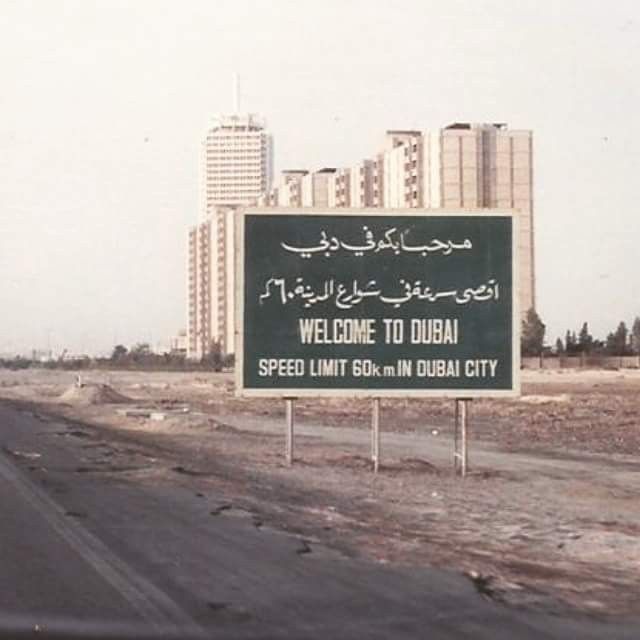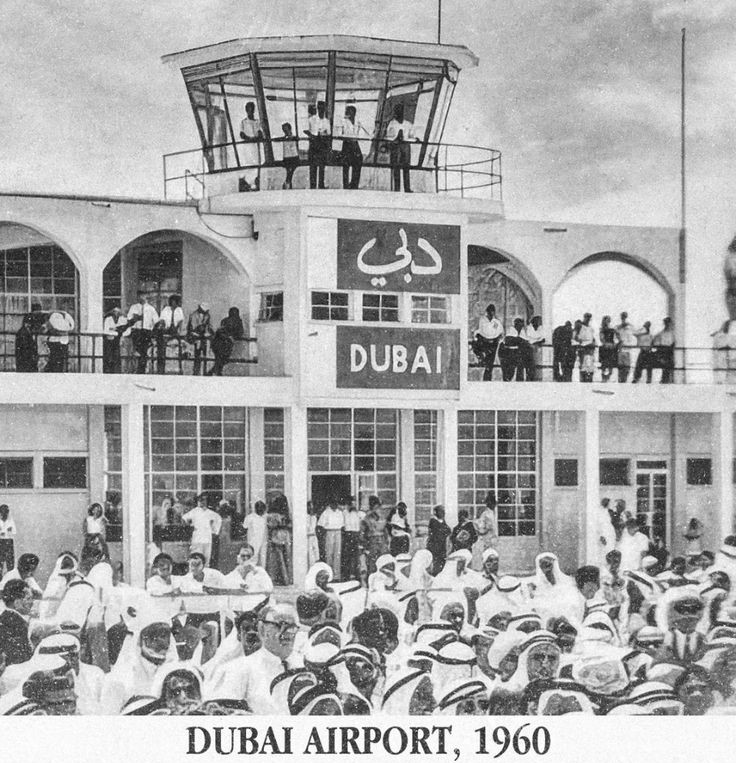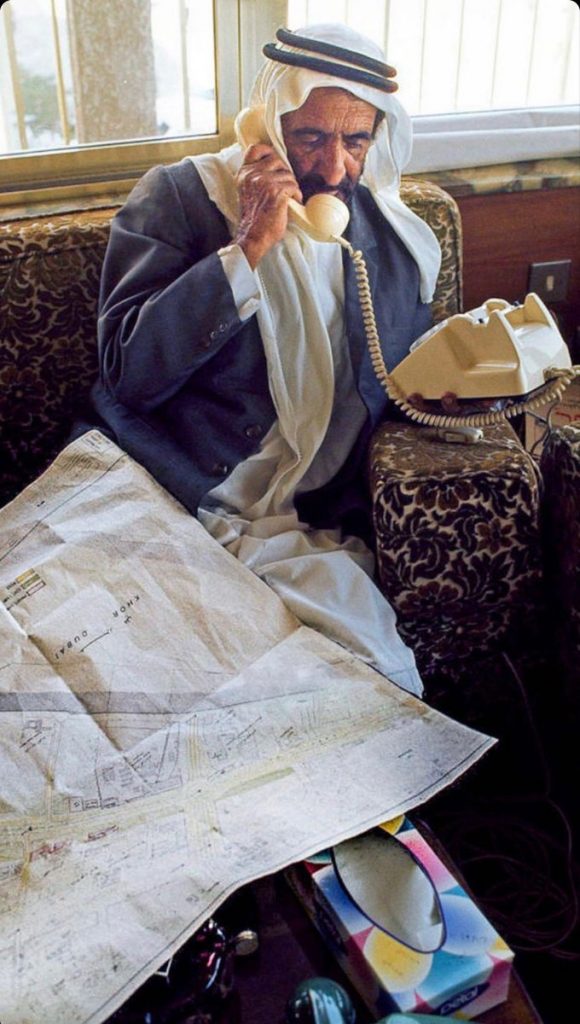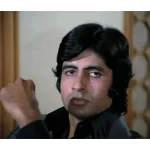Mohammed Ali Saadi Al Rais, a prominent Dubai businessman, takes a nostalgic trip down memory lane to bring us snapshots of an emirate which has grown from a small town to a bustling city.

A small town of less than 20,000 people living in crudely-constructed barsati houses made of date-palm fronds and in other dwellings made of gypsum… this was Dubai in the early 1930’s.
There was but one building that could be described as palatial – Sheikh Saeed’s house, where the ruling family lived, which is now a museum.
Mohammad Ali Saadi Al Rais, a prominent Dubai businessman, had vivid memories of those days: “I clearly remember my circumstances and environment since the time I was seven years old,” said the-then 73-year-old national. “Life was comparatively uncomplicated; the waves of change and development had not yet reached the shores of the UAE. There were also no facilities. There was no electricity, and we used petromax lamps. Due to the intense heat, we would keep the lamps outside our makeshift rooms. But I can honestly say it never crossed our minds that we were in any discomfort, because we did not know better. I recollect that we really enjoyed ourselves and had no tension in our lives,” reminisced Al Rais.
“There were very few expats – only about a thousand strong Indian community which managed textile and tailoring shops, besides clerks at Grey Mackenzie. That was in the days when there were no restrictions on entry of other nationals into Dubai. There were no visas,” Al Rais pointed out.
There were no schools in Dubai before Al Madrasah Ahmadiyah, now known as Umm Al Madaares or the Mother of Schools, was established in Deira. “It is said to have been built by Sheikh Ahmed bin Dalmouk, before I was born,” Al Rais said.
However, Al Rais went to school in Karachi, attending his first class in 1946, at the age of 20. “Fifteen boys, including Majid Al Ghurair, Moosa Habib and Ibrahim Jamad, the erstwhile Ambassador of the UAE to Bangladesh went from Dubai.”
They travelled by the British India ship, Bamoora, which was part of a fleet of three vessels (Babita and Bandra were the others) that used to ply these waters. “I remember that the trip was both daunting and exciting for us youngsters,” recalled Al Rais.

Before leaving for Karachi, the boys attended religious school in Dubai. They also learnt English, as this was necessary to get admission to schools in Karachi. Al Rais took private tuitions from Abdullah Al Khahaliq Garnis and remembered Gargash as his first “real teacher”.
Later, Al Rais joined his family’s shipping concern, Rais Hassan Sadi, one of the oldest companies in Dubai established in 1908. A few years later, Al Rais started his own businesses in shipping, barging and real estate.
Looking back, Al Rais said, “I would say we were happy under British Rule during the time of the Trucial States. Things were easier and simpler, and you got whatever you wanted from the government. People were very reliable. No one borrowed money, and they traded in the commodities that were readily available. There was mutual understanding between individuals and your word of honour was sufficient to strike a deal – rarely was anything written down! Today we have to take post-dated cheques and guarantees,” Al Rais rued.
But Dubai had a tryst with destiny. It could not remain as a small coastal town with a few thousand small traders.
“The credit for development (of Dubai) goes to late Sheikh Rashid bin Saeed Al Maktoum, the founder of Dubai,” said Al Rais, “Sheikh Rashid was a humble and delightful person who did a lot for us”.
Al Rais remembered the discovery of oil in Abu Dhabi in 1960. “We were agents for Shell and close to Sheikh Shakhbut, brother of Sheikh Zayed, and went to Abu Dhabi seeking permission to trade. I remember sleeping in my car overnight waiting for an audience with Sheikh Shakhbut, and eventually he did see us and give permission. Nothing was ever written down as it was kalam sheikh (the word of the Sheikh).”
It was in 1966 that oil was discovered off the shores of Dubai. However, it did not become the main source of revenue for the emirate. Sheikh Rashid, who was brilliant in economics despite his lack of formal schooling, wisely gave importance to trade – the oil boom in the sixties was exploited to promote diversification and further development of trade in the emirate.
Sheikh Rashid had a vision for a greater Dubai. He knew that if the emirate was to progress further, it should have an international airport. He therefore embarked on an airport project and other projects that formed the nucleus for Dubai’s development.

The emirate thus took its major steps to development. Soon, there was indication that trade was improving, with one report indicating that Dubai was the second largest importer of Swiss watches in the world.
Other aspects necessary for the development of society, women’s welfare for instance, were also given attention. Women were encouraged to work at home, teach in schools and pursue a career in nursing, Al Rais pointed out.
“Development here has been fantastic, a lot of it guided by the unseen hand of Sheikh Rashid,” he said. “We could talk to him openly, even about things that were going wrong – his biggest strength was that he was ready to listen to anyone.”
The cost of living was low in Dubai. “Everything was cheap,” Al Rais remembered. But this lasted only till the seventies. In 1975, rents started going up because of a shortage of accommodation.
“People complained to Sheikh Rashd about the high rents and he, in his own inimitable way, dealt with the situation,” said Al Rais. Sheikh Rashid ordered that low-cost houses be built in Satwa, Rashidiya, Ghusais and other places, with instructions that they should be affordable to the common man. Soon, the rents elsewhere started coming down.
Al Rais pointed out that Dubai became an expensive city to live in and was in need of measures to control the situation. “We should not be proud of the fact that the cost of living is higher in Dubai than in New York,” he warned. The amenities are of a high standard, but they are expensive to build and maintain, and the common man may not be able to afford them.
The value of land has skyrocketed in Dubai, Al Rais pointed out. From AED 40 per square foot 15 years ago, it has risen to AED 800 per square foot – a 2,000 per cent increase!
However, he was confident that Dubai would not decline, despite its problems. The open-door policy of the emirate is still continuing and privatisation has enabled people to do better business, he said.
Another factor that will ensure the progress of Dubai is the ability of the rulers to adapt quickly to situations. They are open to change if it improves trade and economy. “It is the broad-mindedness,” Al Rais pointed out, “that has been passed down from Sheikh Rashid to his sons that makes Dubai special and us proud to be citizens of this country.”




